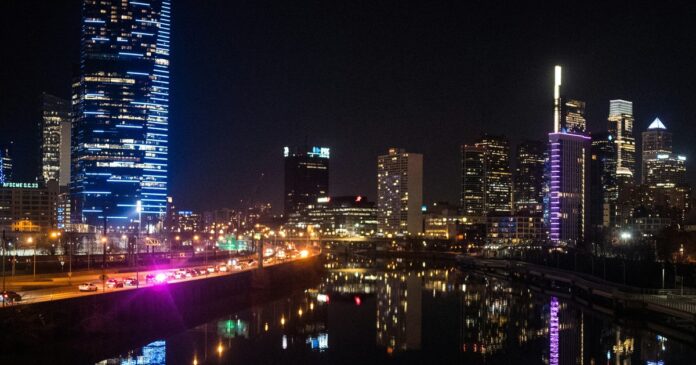Exposure to light pollution may increase the risk of Alzheimer’s disease, particularly in people under 65, a new study suggests.
Researchers from Rush University Medical Center in Chicago found Alzheimer’s diagnoses are more prevalent in areas with high amounts of evening light pollution. They found that correlation to be stronger than several other factors, including alcohol abuse, chronic kidney disease, depression, heart failure and obesity. But the association was weaker than the links between Alzheimer’s and diabetes and hypertension.
MORE: To boost abortion access, Philly is allocating city funding to Planned Parenthood for the first time
Alzheimer’s is the most common form of dementia, affecting an estimated 5.8 million Americans in 2020. The condition begins with mild memory loss and can progress to the point that people can no longer hold conversations or interact with the environment around them. Its cause is unknown, and there is no known cure.
For the study, researchers used light pollution data collected by satellites to determine nighttime light intensity at the state and county level from 2012 to 2018. They used Medicare reports to determine Alzheimer’s prevalence.
For people under 65, exposure to light pollution was more strongly linked to Alzheimer’s than any other factor examined in the study, suggesting younger adults may be particularly sensitive to light exposure.
Light pollution can disturb the body’s circadian rhythms, which dictates when the body feels tired. Though further research is needed on the link between light pollution and Alzheimer’s, the researchers suggested people could consider lifestyle changes like blackout curtains or sleeping with eye masks.
More than 99% of Americans live in areas with light pollution, according to a light pollution map published in the journal Science Advances in 2016. The worst light pollution in the U.S. occurs in the urban areas that stretch from Washington to Boston. Philadelphia, of course, sits in the middle of that stretch and is considered one of the worst U.S. cities for stargazing.
Since August 2023, Philadelphia has been replacing 130,000 streetlights with LED lights as part of an effort to reduce energy costs and emissions. The lights are brighter and longer-lasting, which city officials say will help deter crime and improve traffic safety.
Though lights naturally cause light pollution, the city has taken several steps in hopes of mitigating the issues: The light fixtures are designed to reduce the amount of light that shines toward the sky, instead focusing more light toward the street. And they can be easily adjusted so that they can be turned down, or even shut off, at times when most people are sleeping.



